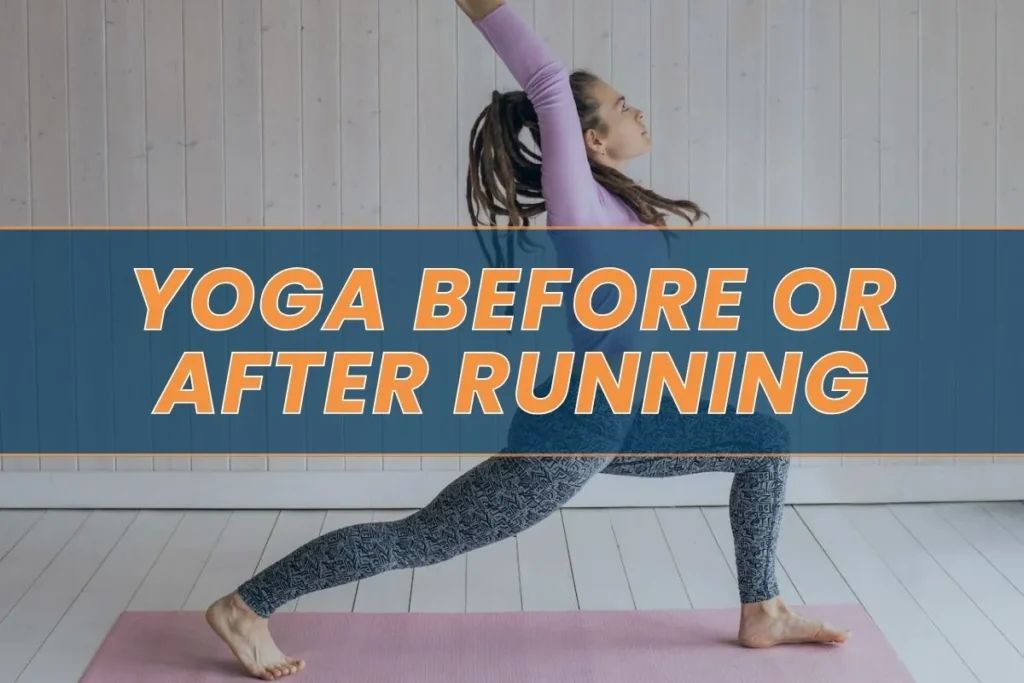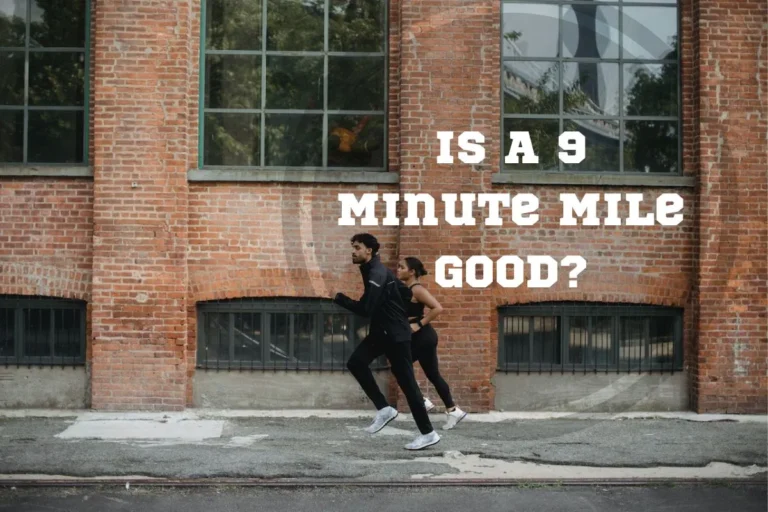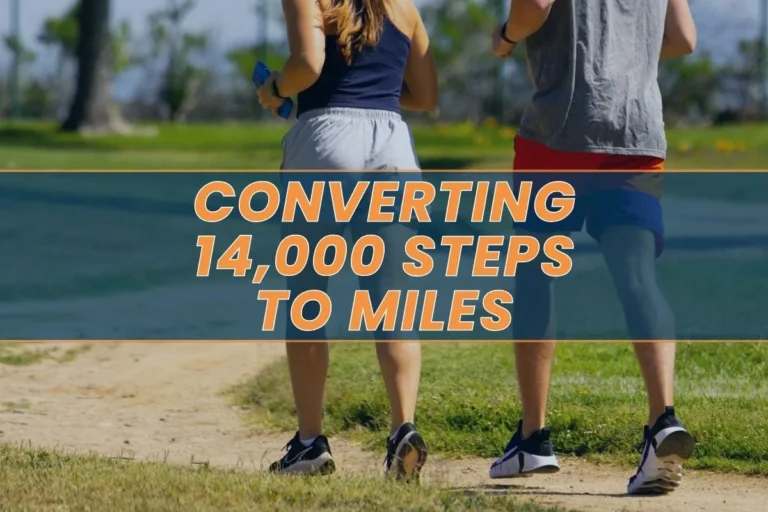Is It Better to Do Yoga Before or After Running?
The benefits of both yoga and running are well-known, but many runners struggle with the decision of whether to do yoga before or after running. When deciding, it is important to consider both the physical and mental challenges that come with these activities.
This post will discuss how runners can benefit from combining both activities into one day to help them reach their fitness goals. We will talk about specific exercises that should be used before and after a run, as well as how much time should be allocated between each session.
Finally, this post will discuss the pros and cons of doing yoga either before or after a run so you can make an educated decision about your own routine. Let’s dive in!
Should You Run Before or After Yoga?
Is it better to do yoga before or after running? Pre-run yoga stretching should always be done before running in order to avoid injury and maximize performance during your workout. Post-run yoga exercises involve lengthening tight muscles and focusing on breath work, balance, and flexibility.

Is Yoga Good for Runners?
Yoga can be incredibly beneficial for runners, as it helps to strengthen the body and reduce physical stress. This is especially true when done before a run, as yoga stretches and warms up the muscles. It enhances running power by strengthening the lower and upper body and the core, while also improving posture.
Yoga also increases awareness of your body’s form when running, allowing you to maintain a balanced stride. It improves joint range of motion, reduces risk of injury, strengthens muscles used when running, and improves breathing techniques. Ultimately, these benefits lead to improved overall performance in running.
For many runners, yoga can be the key to improved overall performance. It’s all about the balance. Adding yoga to an existing running routine helps create a complete fitness program that is perfect for increasing both strength and flexibility.
Practicing several different poses and breathing exercises on a regular basis strengthens not only the muscles used in running, but also those that are often ignored by runners.
Yoga and Running on the Same Day: 3 Basic Tips
Combining two intense workouts on the same day–such as running and yoga–can be a great way to build strength, core stability, and overall fitness. As long as you plan ahead of time, understand your body, and allow for sufficient rest afterwards, double workouts are an efficient way to get more out of each session.
When doing both activities in one day, it’s important to emphasize quality over quantity, as taking fewer breaks or cutting corners could lead to overexertion or injury.

Pro Tip:
Make sure that you focus on warming up your muscles before starting any physical activity, so they will have enough flexibility for the movements required during both running and yoga.

Pro Tip:
Make sure that you focus on warming up your muscles before starting any physical activity, so they will have enough flexibility for the movements required during both running and yoga.
Here are 3 simple tips that can help you balance yoga and running training in the same day:
1. Know Your Workout Mindset
It is important for runners to understand their specific workout mindsets when combining running and yoga, in order to create a balanced and effective routine. Identifying your preference to either work on the physical body or mental health can help choose the kind of exercises needed.
If you prefer working out with an intense focus, activities such as interval sprints can be balanced with a light yoga warm-up. On the other hand, if you want more “me time” while still engaging in physical activity, try full-on yoga training after an easy run.

2. Quality Over Quantity
Quality is key when finding a balance between two activities, such as running and yoga. They require both physical and mental preparation in order to reap the full benefits that each activity brings.
Prioritizing quality over quantity ensures optimal progress across all exercises, with reduced risk of burnout or injury. By being mindful about how you train, you can tailor each workout for maximum impact while avoiding uneven levels of stress due to extreme efforts in either exercise.
3. Continual Learning and Growth
Building strength and increasing cardiovascular endurance, flexibility, balance, and mindfulness are all components of an effective workout. Even small changes, such as switching up the order in which you do certain exercises or adding new techniques, are a great way to keep your progress on track without altering any long-term goals.
Doing yoga before or after running is a good option for those who want to continually challenge their bodies while staying on pace with longer-term goals.
Is It Better to Do Yoga Before or After Running?
In short, doing yoga as part of an active warm-up before running may be beneficial in helping prepare the body for a run. Meanwhile, yoga following a run helps the body to cool down and restore balance. Let’s discuss this in more detail.
Yoga before Running
Yoga can be an invaluable tool for any runner looking to improve their performance and stay injury-free. You should consider doing some yoga before running, as it has many benefits.
1. Warm-Up
Doing yoga poses before running can help to prepare the body for better performance and reduce the risk of injury. Practicing yoga as part of a pre-run warm-up can help improve flexibility, activate key muscle groups, and increase energy levels, all of which gear the body up for a great run.
Holding poses in yoga helps prepare your muscles for more dynamic movements during running, while also mentally connecting you with your body and preparing it for physical exertion.
2. Mind-Body Connection
Yoga can help a runner develop a strong connection between their mind and body, which leads to improved performance. Practicing yoga as part of a running plan enables the runner to emphasize mental focus and concentration.
Having this awareness allows the runner to adjust their posture or stride while on the run if necessary, customizing their technique depending on terrain or weather conditions. In addition, the positive energy created by a yoga practice provides greater motivation when physical fatigue starts to set in during longer runs.

3. Increased Energy
During a typical yoga session, runners combine breathing exercises, postural training, balance work, and dynamic movement to boost their energy. Learning to use the breath correctly is key to improving oxygen flow throughout the body. This provides a natural surge of energy and increased focus.
Additionally, yoga helps reduce stress hormones, which make us feel fatigued or anxious. This allows runners to access reserves of physical energy when they need it most.
Subscribe to Our Running Newsletter!
Get free running tips from renowned professional athletes and discounts from top-notch brands.
Yoga Exercises for a Pre-Run Warm-up
Yoga offers numerous exercises that can help improve running performance, including warm-up exercises, stretching techniques, muscle preparation, and flexibility training. Moving through dynamic stretches such as lunges or side bends increases blood flow to the muscles and helps prepare them for activity.

Pro Tip:
As part of your pre-run routine, you should focus on stretches that target large muscle groups, such as hamstrings, calves, and quads. Try hip openers like Pigeon Pose or low lunges to correctly prepare your body for dynamic movements while running.

Pro Tip:
As part of your pre-run routine, you should focus on stretches that target large muscle groups, such as hamstrings, calves, and quads. Try hip openers like Pigeon Pose or low lunges to correctly prepare your body for dynamic movements while running.
When combined with deep breathing, these poses will activate the core stabilizers, facilitating greater balance and stability during a run. They also help maintain proper range of motion during a run.
Core strength is important in both yoga and running, so incorporating stability workouts such as planks, Boat Pose, and Cat Cow into your routine can be very beneficial.
This way, you can easily fit it into your pre-run routine without having to sacrifice much of your regular workout time.
Yoga After Running
Yoga after running can be a great way to recover and aid in the muscle-repair process. The stretching and movement that yoga provides helps to release tension built up from intense exercise, reduce pain both during and after training, improve overall range of motion, and even prevent potential injuries.
Here are the main 2 benefits of yoga after running.
1. Cool Down
Stretching after a workout is an important part of muscle recovery and injury prevention. Cooling down and stretching following a run helps to improve flexibility and regulate your body temperature.
After any running training, it’s crucial to perform cool-down exercises in order to let the muscles gradually relax and return your heart rate back to its usual state. Incorporating yoga into your cool-down routine provides several physical benefits while also promoting relaxation of both the mind and body.
2. Reduced Muscle Soreness
Practicing yoga after a run can help reduce muscle soreness—a common issue for runners. Yoga helps strengthen muscles and improve the flexibility of areas that running may have tightened up.

Pro Tip:
It will be considerably more difficult for someone who weighs 200 pounds with a height of 6 ft but has 30 percent of body fat to run quicker than it will be for someone who weighs 200 pounds with a height of 6 ft but has only 12 percent of body fat.

Pro Tip:
It will be considerably more difficult for someone who weighs 200 pounds with a height of 6 ft but has 30 percent of body fat to run quicker than it will be for someone who weighs 200 pounds with a height of 6 ft but has only 12 percent of body fat.
Restorative poses and active recovery methods are especially beneficial when running before yoga because they help to prevent injuries due to overexertion.
Yoga Exercises for Post-Running Cool-Down
Popular poses like Child’s Pose and Downward Dog can be incorporated into a cool-down routine after a run, allowing you to stretch all the major leg muscles worked during running. Examples of restorative poses also include supported forward folds, squats, and lunge side bends.
All these poses help improve performance and prevent injury by lengthening core muscles while calming the breath. Doing these yoga exercises regularly will assist with cooling down your tired body after running so you don’t experience delayed onset muscle soreness later in the day.
When it comes to how long to wait to do yoga after running, your body should be cooled down and not in a state of intense exertion. Generally speaking, you should wait at least 15 minutes between finishing your run and starting a yoga practice.
However, depending on the length and intensity of your run, anywhere from 30 minutes up to an hour may be recommended before transitioning to post-run yoga activities. This allows for an adequate cooling off time so that you can enjoy all of the benefits of any stretching exercises you will perform.
Should I Do Yoga Before or After Running?
Yoga is an important aspect of physical fitness, and can greatly benefit runners if done before or after a run. Doing yoga before running helps to warm up the body, improve balance and flexibility, and create a stronger mind-body connection, which prepares your body for exercise. Benefits such as increased energy come from poses focused on breathing techniques that emphasize mindfulness.
On the other hand, doing yoga after running has different benefits, such as helping you cool down. Stretching exercises increase muscle power and reduce soreness in muscles that have been used during running.
Additionally, running after yoga helps improve respiratory capacity through deep breathing with diaphragmatic support, helping you feel rejuvenated instead of exhausted after your run. Both approaches offer immense benefits to your overall fitness routine.
Frequently Asked Questions About a Run Before or After Yoga
Is It Okay to Do Yoga Before or After a Workout?
Doing yoga both before and after a workout can offer a range of benefits for runners. Adding yoga to your fitness routine as part of either your warm-up or cool down may help to increase flexibility and improve overall muscle recovery.
Is It Better to Do Yoga Before or After Cardio?
Doing yoga prior to cardio can act as an effective warm-up that helps increase flexibility and boosts energy levels, allowing for improved performance. On the other hand, practicing yoga after a run can aid in muscle recovery, reduce tension in the muscles, and improve range of motion.
Final Thoughts on Yoga Before or After Running
When it comes to practicing both yoga and running, there is no reason to have to choose one over the other. Both provide unique benefits that can enhance performance, promote recovery, and prevent injuries.
Whether yoga is done before or after a run depends largely on your preferences and goals, as well as the recovery time needed between sessions. A shorter yoga session will typically be better suited for a warm-up or cool-down ,whereas longer sessions for breath work or deep stretches may be best saved until after some rest has been taken after a run.
Make sure to mix up your routine enough so that neither activity becomes stale or overly exhausting, which could lead to more harm than good in the long run!
Have you ever tried yoga and running same day? Please share your experience in the comments below.
Also Read:
- How Can I Prevent Cramps While Running
- Can Women Wear Men’s Running Shoes
- How Many Minutes Is 7 Miles Running
- Does Running Tone Your Body
- Running 20 Minutes a Day
- Best Trail Running Poles
- Best Shoes for Peroneal Tendonitis
- How Long Is a 2 Mile Walk
References:
- Brad Donohue et al. “Effects of brief yoga exercises and motivational preparatory interventions in distance runners: results of a controlled trial.” British journal of sports medicine vol. 40,1 (2006): 60-3; discussion 60-3 https://bjsm.bmj.com/content/40/1/60
- Christie L Seltmann et al. “Effects of 3 Weeks Yogic Breathing Practice on Ventilation and Running Economy.” International journal of exercise science vol. 13,2 62-74. 1 Feb. 2020 https://www.ncbi.nlm.nih.gov/pmc/articles/PMC7039472/
- Jay M Polsgrove et al. “Impact of 10-weeks of yoga practice on flexibility and balance of college athletes.” International journal of yoga vol. 9,1 (2016): 27-34 https://www.ncbi.nlm.nih.gov/pmc/articles/PMC4728955/
- Jillian R Satin et al. “Yoga and psychophysiological determinants of cardiovascular health: comparing yoga practitioners, runners, and sedentary individuals.” Annals of behavioral medicine : a publication of the Society of Behavioral Medicine vol. 47,2 (2014): 231-41. https://academic.oup.com/abm/article/47/2/231/4563958?login=false
- Ryan P Lowery et al. “Effects of static stretching on 1-mile uphill run performance.” Journal of strength and conditioning research vol. 28,1 (2014): 161-7. https://journals.lww.com/nsca-jscr/fulltext/2014/01000/effects_of_static_stretching_on_1_mile_uphill_run.21.aspx
If you have any questions or suggestions, you can contact us via email – [email protected]







Good stuff conveyed. Thank you so much for sharing this content; I found it to be incredibly interesting and informative. Very nice.